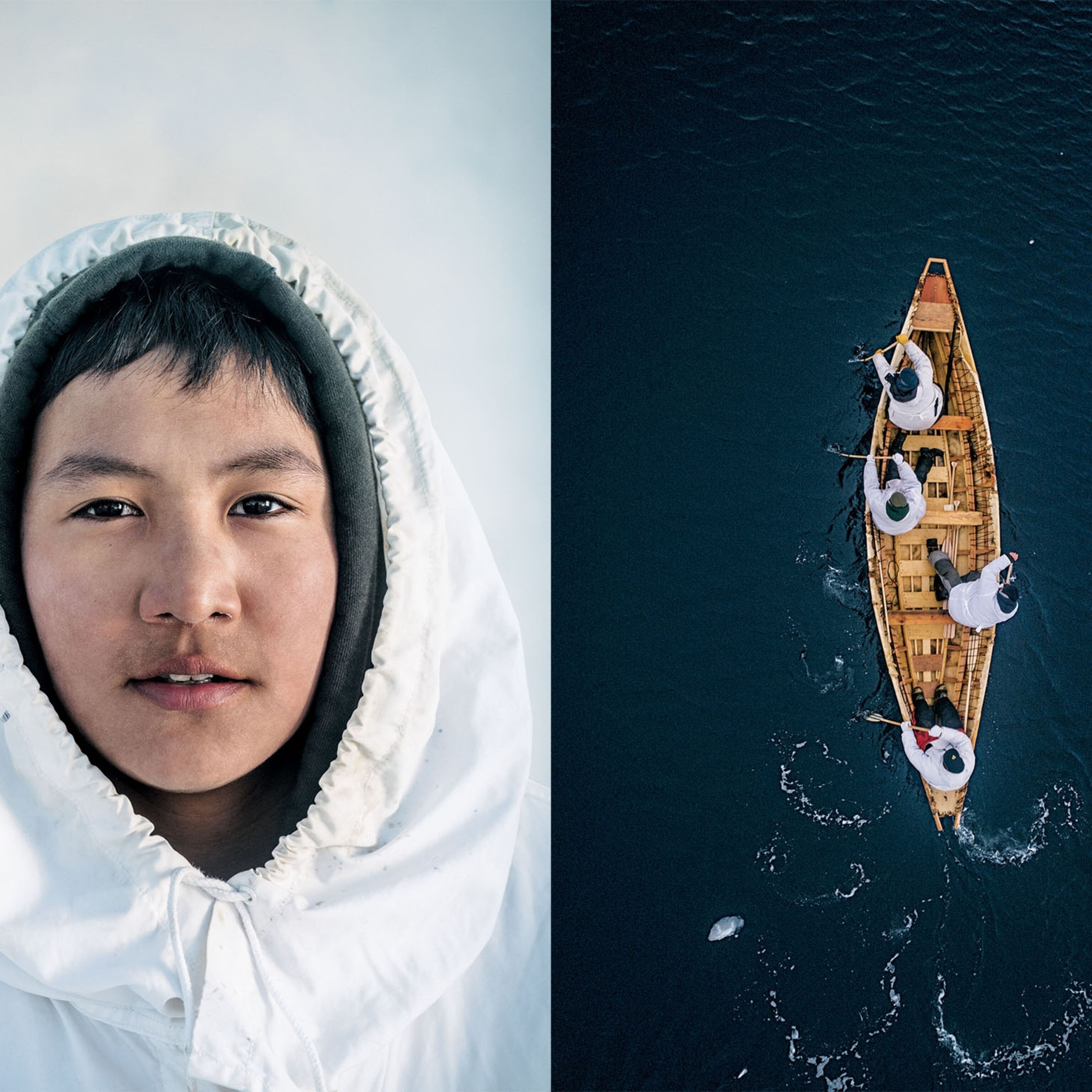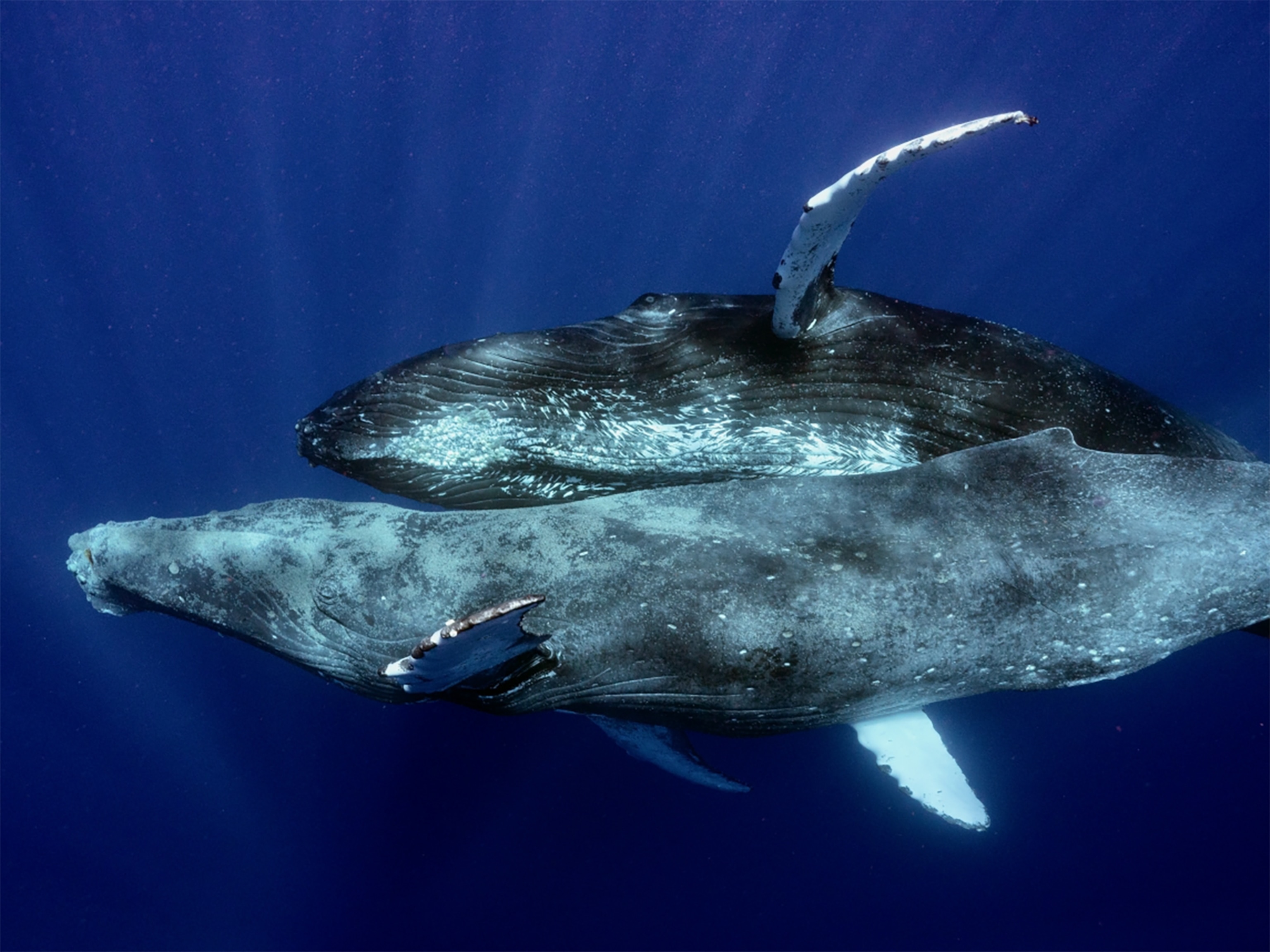
Examining an Alaskan Hunting Culture That’s Slowly Melting Away
Nathaniel Wilder was in trouble. He had taken a trip out on sea ice with a group of young Alaskan men for what was supposed to be a duck-hunting expedition. Instead, it turned into a party, and when most of revelers took off, he found himself stranded with his buddy who had a loaded shotgun and was in no condition to drive the snowmobile.
Wilder eventually drove the sled back to town with his friend holding onto the rails, but for him, the experience was emblematic of some of the complicated issues facing the northwestern Alaskan community of Point Hope.

Located on the Chukchi Sea, Point Hope has a rich history of traditional subsistence hunting, but climate change and modern distractions are altering its customary way of life. According to Wilder, the sea ice is melting, hunting practices are changing, the youth display a waning interest in Inupiat culture and language, and alcoholism and drug use are common problems.

Wilder, a native of Alaska, has been documenting this community since 2011. On his first visit he extended his ticket multiple times because he was so enraptured with the place and its people. He started to get to know the subsistence practices of the community—including what food they had access to and when they hunted or fished for it—and he keeps returning to more deeply explore their story.
“Cultural survival here is directly tied to the whale harvest. It is at the center of village celebrations, family pride, and even assimilation of modern religion in the community,” says Wilder. “I want people to see how important and culturally rich the marine subsistence lifestyle still is for this village.”

With his images, Wilder aims to document, honor, and respect traditional culture, while also acknowledging that many of the rituals he is capturing may slowly be fading away. He also wants to capture the Point Hope community now, in case of an offshore oil spill that could drastically alter, or completely end, its current way of life.
“During the winter, people are coming and going all over the little town, or riding out along the coastline, or across the ice,” says Wilder, describing the community. “A snowmobile is requisite for everyone. People go to caribou hunting grounds, out to the sea ice, upriver, or down the coast to cabins. In the summer they’re out on their four-wheelers picking berries, riding down the coast to pick murre eggs from a cliff, going to the cabins, or any number of places. There is always activity.”

As an outsider, Wilder said he had to work hard to get accepted by locals, but after connecting with a whaling captain named Aaron Oktollik—he took a photo of Oktollik’s nephew that the captain liked—he was invited on a caribou hunt to test his mettle. During that trip Wilder was hit by a wayward four-wheeler (although not hurt) and Oktollik decided he was tough enough to take whaling.
A year later, Wilder found himself on the spring whale hunt with Oktollik and was generally welcomed by most of the crew.


“I have felt so grateful for any kind gestures I have received from locals. That kindness has led to opportunities, which have led to photographs,” says Wilder. “Alaska is so much more than glaciers, fishing, and wildlife. And honestly, my favorite photos are always those taken out in tough conditions or remote geographies.”

But while hunting is a cultural tradition, Wilder acknowledges that not all families depend on it.
“I’m learning that subsistence food makes up a smaller percentage of the diet than I originally thought,” he says. “Of course, some families are bigger hunters than others.”
(And to better appreciate the local diet, Wilder says he’s sampled whale blubber, whale tongue, beluga whale, walrus, seal, and eider duck, among other meats.)

But despite learning the culture and making friends, Wilder says photographing in Point Hope is still a challenge. Without his own transportation, Wilder has had to rely on other people to transport him around the ice—which isn’t always reliable. He’s been hampered by harsh weather conditions that limited the whaling expeditions. And he unexpectedly witnessed the killing and skinning of a polar bear, which, while legal and accepted in the community, was a difficult personal challenge for him, as moments before he had been appreciating the beauty and power of the beast.


Still, his persistence in getting to know the people of Point Hope over multiple seasons has paid off in a superlative body of work that provides an unflinching and nonjudgmental look at the community’s culture and marine-based subsistence lifestyle.
“It can be easy to make an armchair judgment about how people live,” says Wilder. “Arctic Alaskans live in a complicated time. If you’re reading this and are inclined to think that the whale harvest should end and wonder why these communities eat whales when food grown and produced elsewhere can easily be shipped, I invite you to think more objectively about this. This is a culture facing rapid change but holding fast to a 2,500-year-old history of subsistence.”
Born, raised, and based in Anchorage, Alaska, Nathaniel Wilder specializes in outdoor lifestyle, adventure, and editorial photography. View more of his work on his website and Instagram.
Related Topics
You May Also Like
Go Further
Animals
- Octopuses have a lot of secrets. Can you guess 8 of them?
- Animals
- Feature
Octopuses have a lot of secrets. Can you guess 8 of them? - This biologist and her rescue dog help protect bears in the AndesThis biologist and her rescue dog help protect bears in the Andes
- An octopus invited this writer into her tank—and her secret worldAn octopus invited this writer into her tank—and her secret world
- Peace-loving bonobos are more aggressive than we thoughtPeace-loving bonobos are more aggressive than we thought
Environment
- Listen to 30 years of climate change transformed into haunting musicListen to 30 years of climate change transformed into haunting music
- This ancient society tried to stop El Niño—with child sacrificeThis ancient society tried to stop El Niño—with child sacrifice
- U.S. plans to clean its drinking water. What does that mean?U.S. plans to clean its drinking water. What does that mean?
- Food systems: supporting the triangle of food security, Video Story
- Paid Content
Food systems: supporting the triangle of food security - Will we ever solve the mystery of the Mima mounds?Will we ever solve the mystery of the Mima mounds?
History & Culture
- Strange clues in a Maya temple reveal a fiery political dramaStrange clues in a Maya temple reveal a fiery political drama
- How technology is revealing secrets in these ancient scrollsHow technology is revealing secrets in these ancient scrolls
- Pilgrimages aren’t just spiritual anymore. They’re a workout.Pilgrimages aren’t just spiritual anymore. They’re a workout.
- This ancient society tried to stop El Niño—with child sacrificeThis ancient society tried to stop El Niño—with child sacrifice
- This ancient cure was just revived in a lab. Does it work?This ancient cure was just revived in a lab. Does it work?
Science
- The unexpected health benefits of Ozempic and MounjaroThe unexpected health benefits of Ozempic and Mounjaro
- Do you have an inner monologue? Here’s what it reveals about you.Do you have an inner monologue? Here’s what it reveals about you.
- Jupiter’s volcanic moon Io has been erupting for billions of yearsJupiter’s volcanic moon Io has been erupting for billions of years
- This 80-foot-long sea monster was the killer whale of its timeThis 80-foot-long sea monster was the killer whale of its time
Travel
- This town is the Alps' first European Capital of CultureThis town is the Alps' first European Capital of Culture
- This royal city lies in the shadow of Kuala LumpurThis royal city lies in the shadow of Kuala Lumpur
- This author tells the story of crypto-trading Mongolian nomadsThis author tells the story of crypto-trading Mongolian nomads







